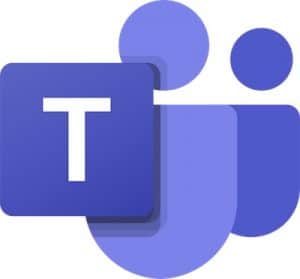Microsoft Teams App
Microsoft Teams messaging and conferencing app gets 12 MILLION new users in a week thanks to people working from home during the coronavirus crisis.
By Ryan Morrison
Messaging and conferencing app Microsoft Teams added 12 million new users in a week thanks to people working from home to slow the spread of coronavirus. Microsoft says there are now 44 million daily users of the app and 20 customers have more than 100,000 users signed in to the remote teamwork service. It’s not clear exactly how many of the 12 million new users have paid for the service and how many are on the free tier.

Recently Microsoft unlocked a number of premium features for users of the free service due to the rise in new home workers because of COVID-19.
(UK) Prime Minister Boris Johnson has urged people to work from home where possible and to practice social distancing by avoiding pubs and restaurants.
He has also closed schools across the country and told anyone with a cough or fever – or family members of those with a cough or fever – to remain in isolation.
The rise in home working has led to a surge in apps such as Microsoft Teams, Slack, and the video conferencing service Zoom.
These allow large groups of people to stay connecting while working in remote locations – including their home.
Teams had 44 million users as of March 18, Microsoft said, more than double the 20 million daily active users that the software maker reported in November.
The number of daily users went up by 37 per cent in just a week from March 11 to March 18 – coinciding with quarantine and lockdown orders.
There were no recent numbers for the major rival to Teams, collaboration app Slack, which said in October that it had 12 million daily active users.
Slack didn’t update that figure during its earnings announcement on March 12, but said four of its five largest deals in the most recent quarter were won against Microsoft Teams.
On Thursday, Slack said it added 7,000 new paid customers from February 1 to March 18, a roughly 40 per cent increase over each of its previous two fiscal quarters, when it had added about 5,000 new paid customers per quarter.
However, that doesn’t include the number of people using its free service, which is likely to have increased significantly due to an increase in home working.
All apps linked to or that make remote working easier have seen spike in demand.
Global downloads of business apps including Tencent Conference, WeChat Work, Zoom, Microsoft Teams, and Slack have risen nearly five fold since the start of the year, data showed, as the coronavirus outbreak changes how corporations work.
While such apps attracted 1.4 million new users across the App Store and Google Play in the first week of January, that figure jumped to a record of 6.7 million in the first week of March, according to app analytics firm Sensor Tower.
Zoom’s daily active user base grew by 67% since early January, data from Apptopia showed.
Analysts, however, warn that not every business app would see a corresponding financial gain from the demand surge.
‘Most of them offer a freemium version so why would users pay when they can use for free,’ Summer Insights Group analyst Jonathan Kees said, pointing to services like Microsoft Teams and Zoom, which recently expanded their free offerings.
Microsoft’s New Features
Microsoft rolled out several features designed to help with telemedicine and working from home, such as bookings application for Teams to help hospitals manage virtual appointments.
‘As organisations around the world are changing the way they work in response to the (coronavirus) situation, we’re going to learn a tremendous amount,’ Satya Nadella, Microsoft’s chief executive, said in a virtual news conference.
The company also announced it was making its full service free to the NHS to allow doctors to communicate safely during the crisis.
‘Technology is key to supporting patients who are self-isolating and makes sure they have the information they need and access to medical support and advice,’ said NHS Digital’s director of technology, Ian Phoenix.
‘For doctors and NHS staff this means that working remotely becomes much easier and more practical.’
Microsoft said Thursday that doctors at St. Luke’s University Health Network in Pennsylvania, who had already been using the Teams app, will start tapping it for videoconferencing with patients.
That will include those vulnerable to the novel coronavirus, to protect patients and the hospital.
Slack earlier this week said it was making the service free for many organisations working to respond to or mitigate the coronavirus and was speeding up the set-up time for new customers.
Microsoft also said it was working on several new features using artificial intelligence that could make working from home easier for Teams users.
One feature can automatically replace the background during a video chat, for example cropping out a messy home bedroom and replacing it with a picture of a tidy commercial office.
Another feature can filter out background sounds during a conference call, such as the crinkling of a crisp packet – but that won’t be available until later this year.


